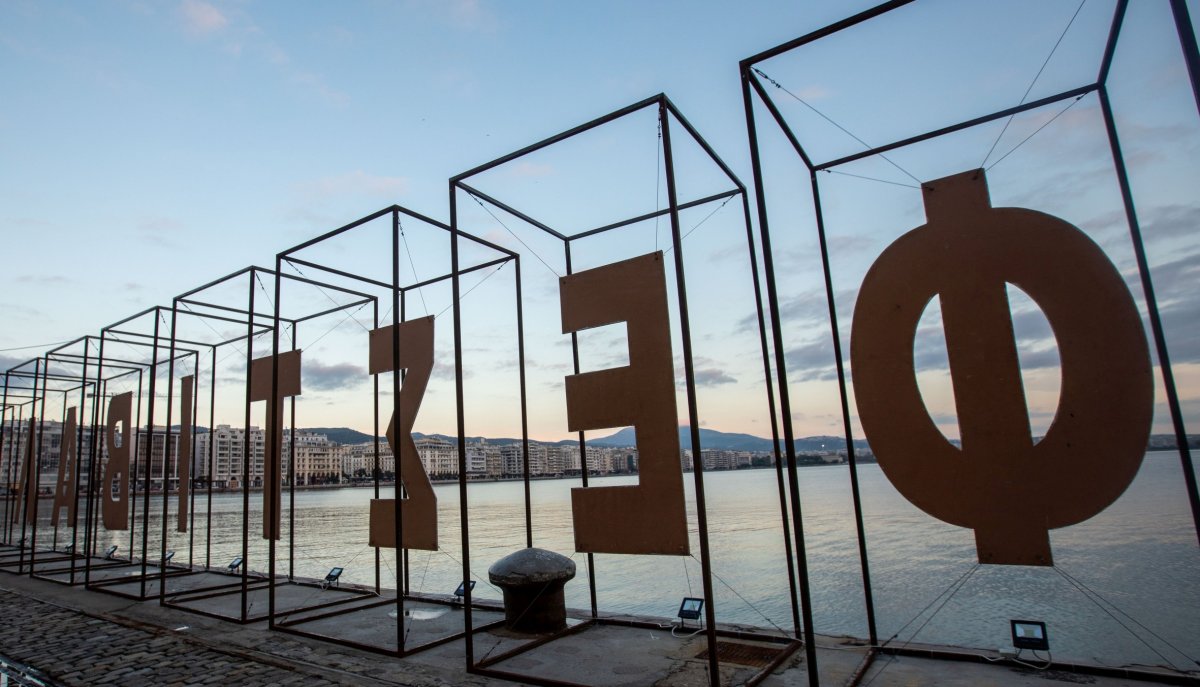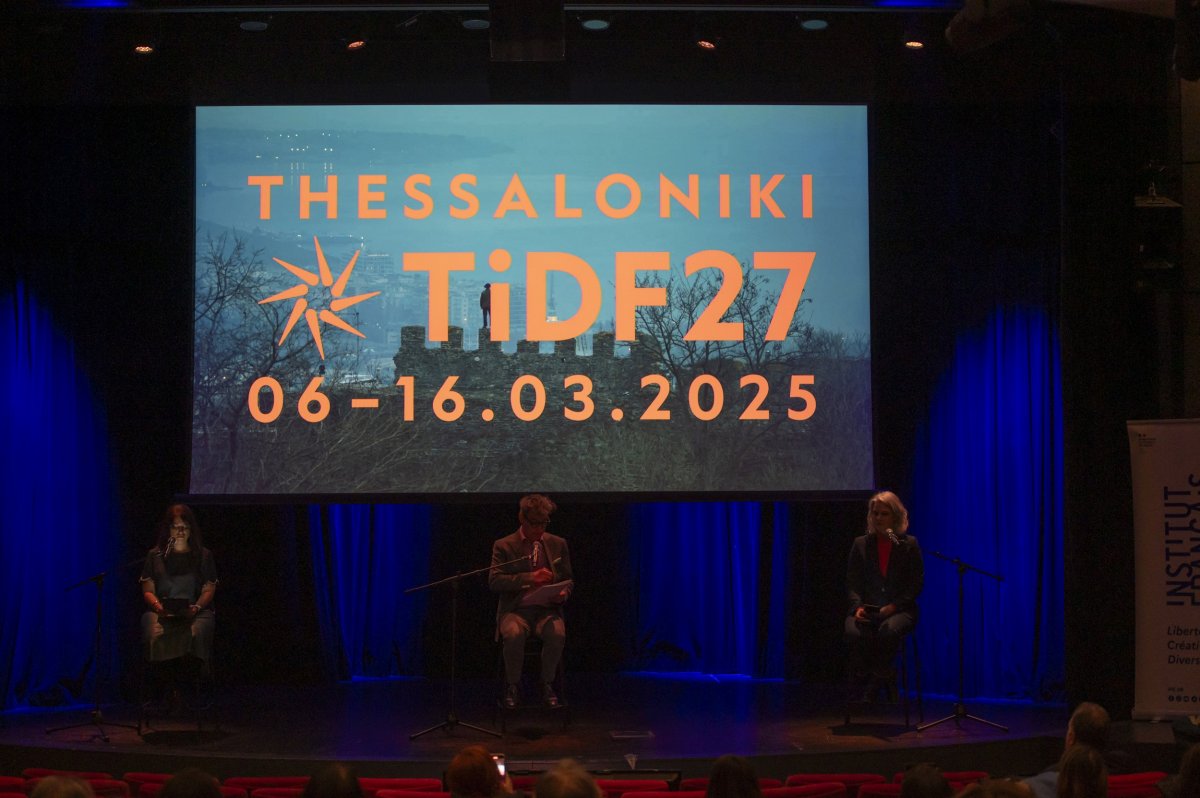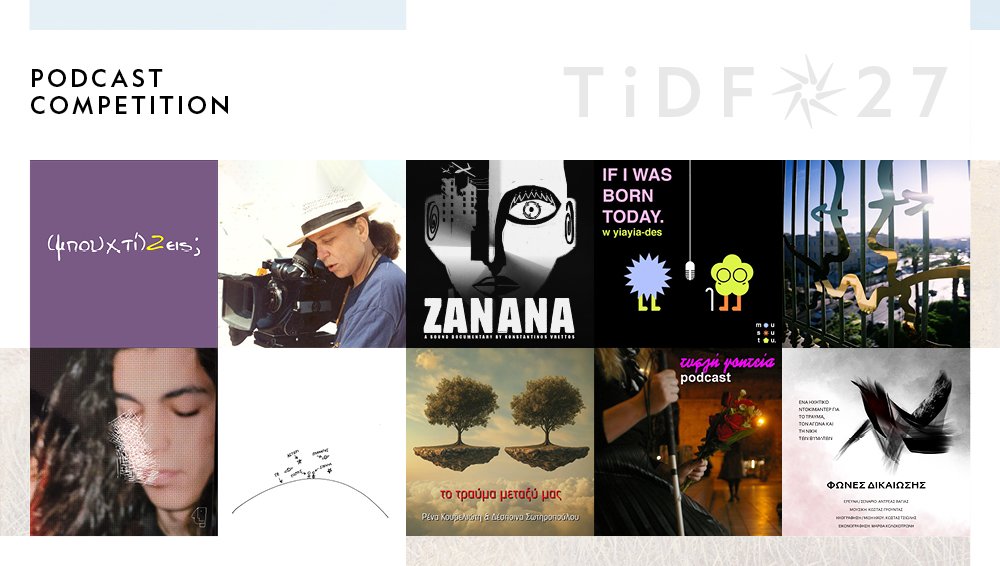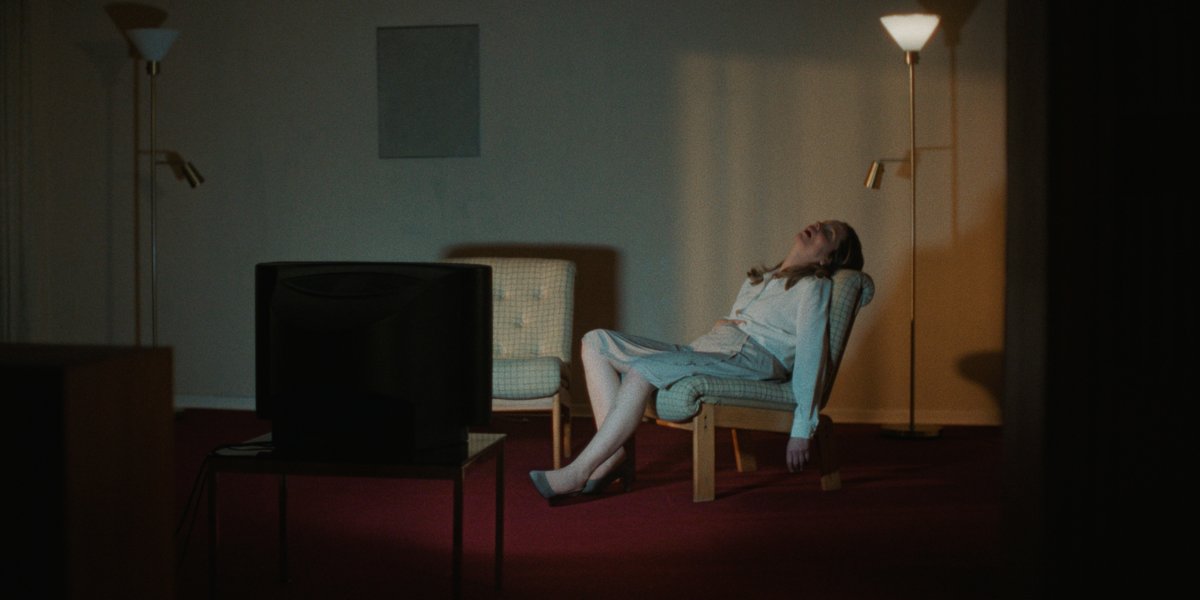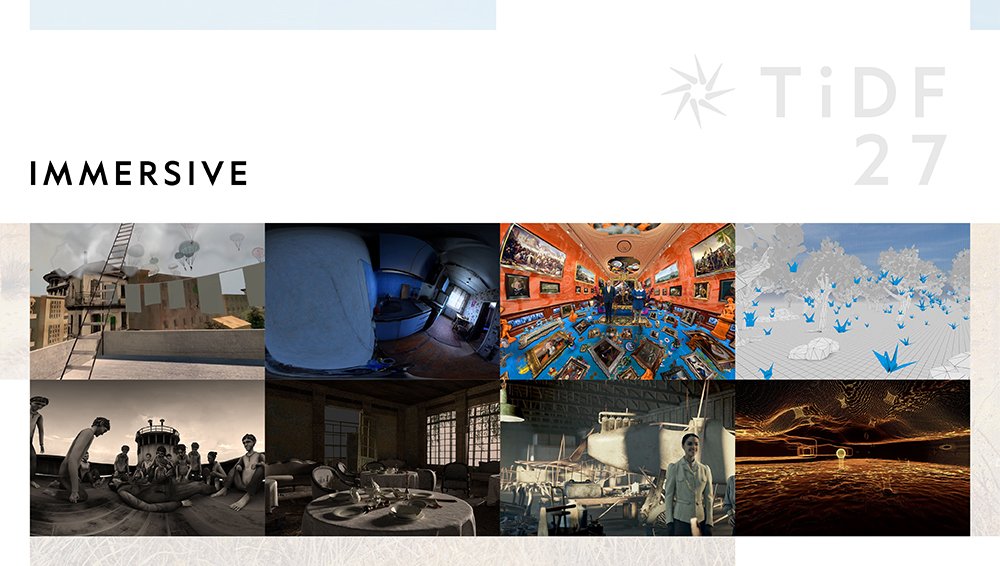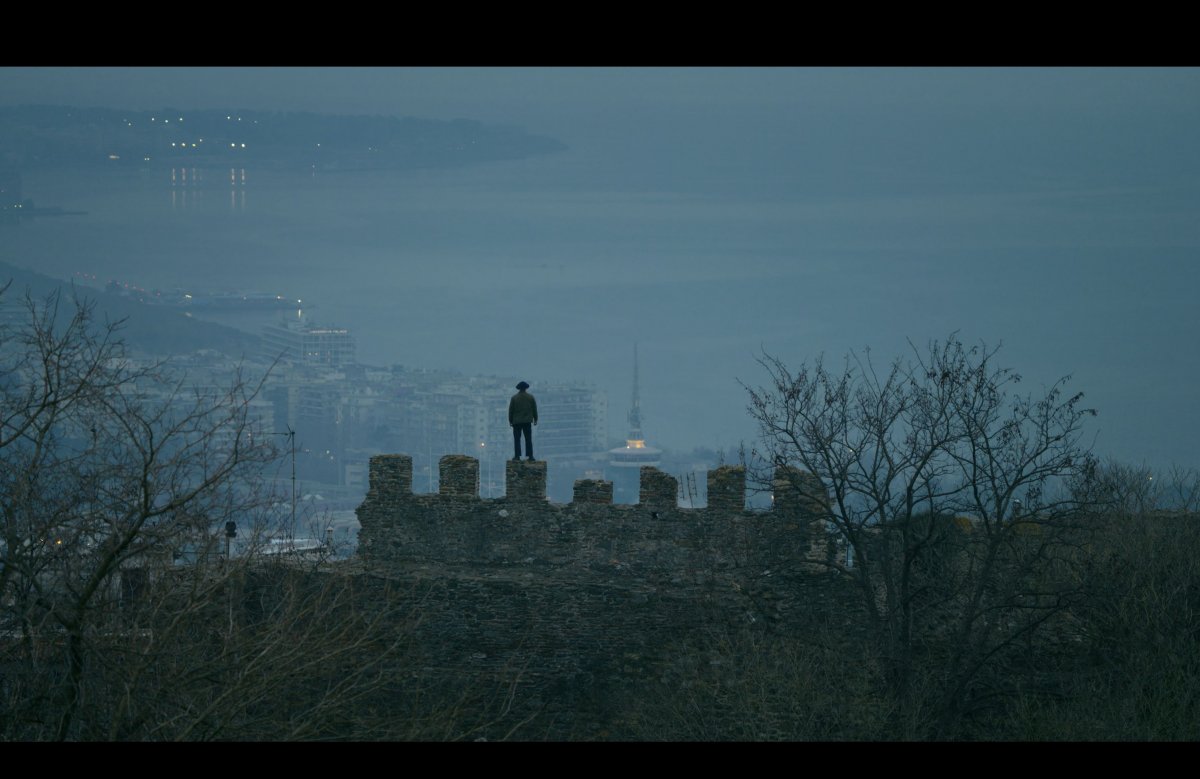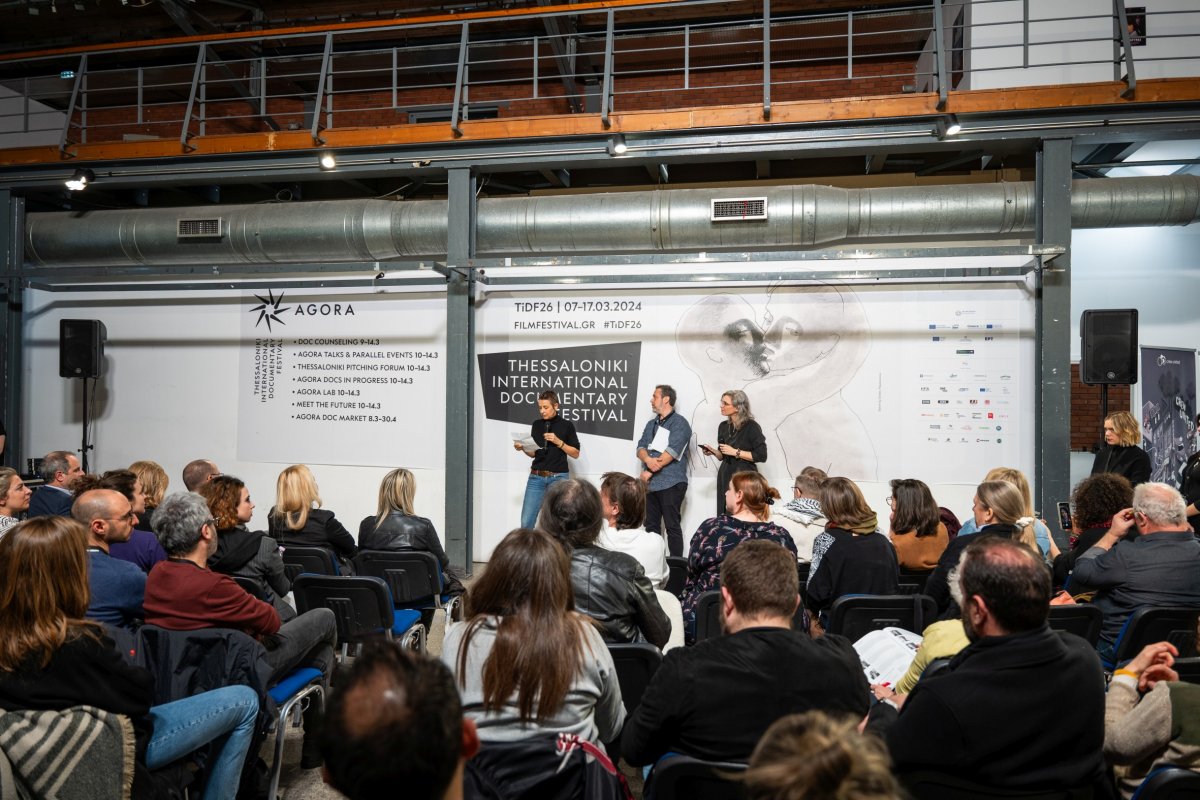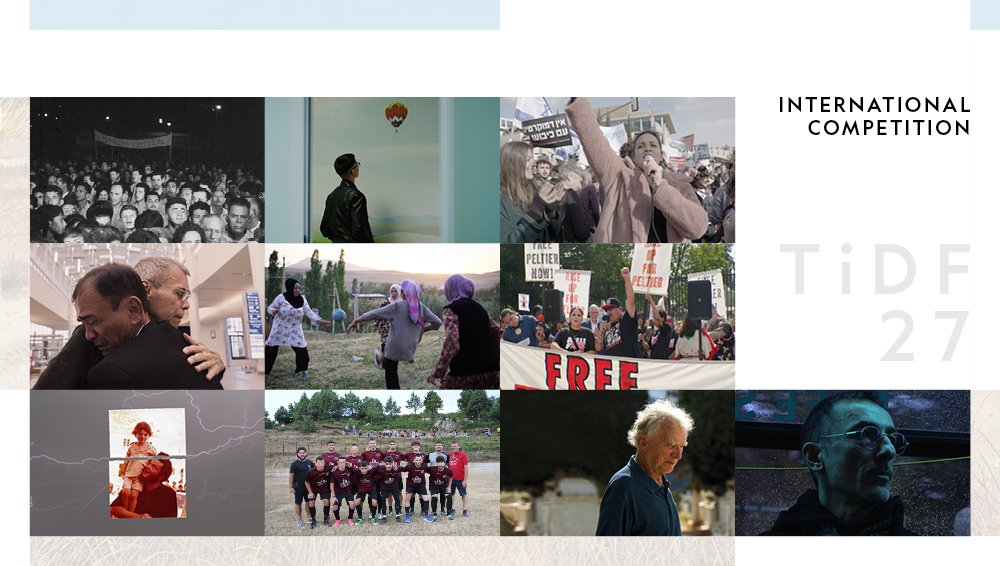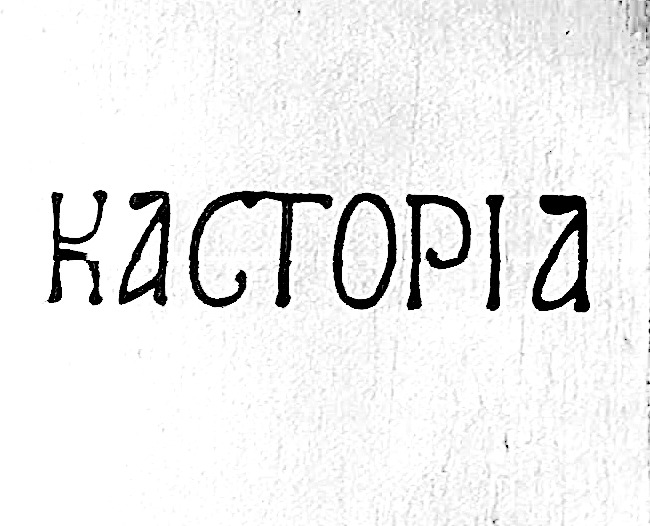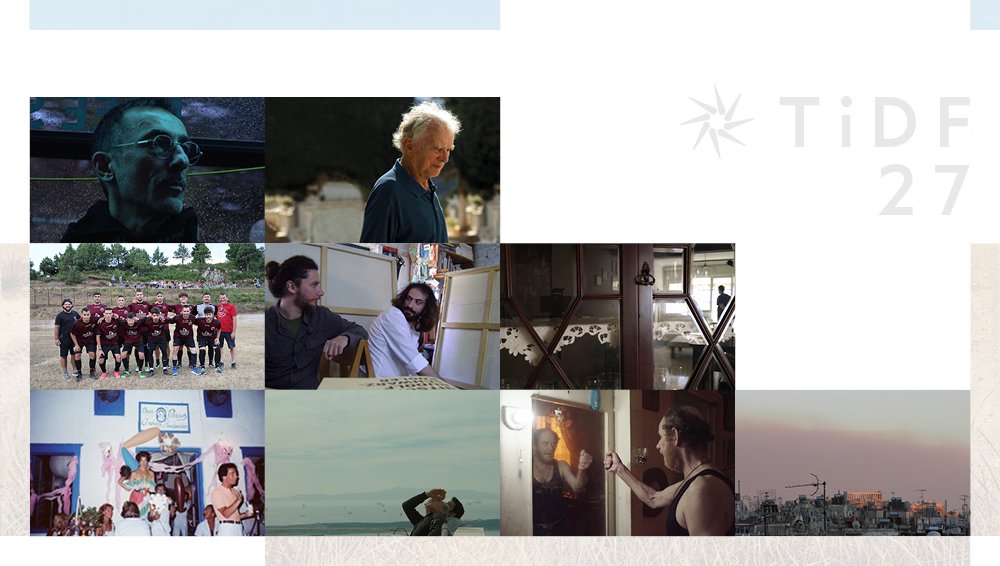PRESS CONFERENCE
ROCKSTEADY-THE ROOTS OF REGGAE – PARK MARK – THE GENIUS AND THE BOYS – BOXING CUBA – AFRICA IS A WOMAN’S NAME
A Press Conference was given on Saturday, March 20, 2010 during the 12th Thessaloniki Documentary Festival - Images of the 21st Century by the directors Stascha Bader (Rocksteady – The Roots of Reggae), Baktash Abtin (Park Mark), Bosse Lindquist (The Genius and the Boys), director Irini Mihailidou and producer Alexis Pylos (Boxing Cuba), as well as director Ingrid Sinclair and producer Cristina Lopez-Palao (Africa is a Woman’s Name).
Speaking about Africa is a Woman’s Name, made by African directors Ingrid Sinclair, Bridget Pickering and Wanjiru Kinyanjui, producer Cristina Lopez-Palao noted that her goal was to find three different women filmmakers to make the film. The film itself is a tribute to the female sex, featuring three important African women from different social statuses and professions, who give a different, stronger view of the role of women in Africa. “I wanted the film to have the viewpoint of women who live in Africa, so that they can describe the problems faced by women there in the best way possible”, said Cristina Lopez-Palao. Ingrid Sinclair revealed that she lived in Zimbabwe for 20 years, making most of her films there, but she had to move to the UK for political reasons. Even today, she says that she feels threatened by the country’s regime. “Something not mentioned in the film is that Amai Rozi, one of the protagonists, worked in my house and is known for her battles against the establishment. For this reason, this woman is afraid that she might be a target”, Ingrid Sinclair declared. And she added: “In spite of problems we faced, we wanted to show that women’s lives are changing for the better. The most wonderful thing about women in leadership roles is that they seek to cooperate with their subordinates and not force their opinions on anyone”.
Stascha Bader faced a different kind of obstacle in his effort to get the subjects of his film Rocksteady – The Roots of Reggae together. The film is about the reunion of legendary singers and musicians of the Rocksteady era. These artists get together forty years later to make an album with their old hits and give a live concert at Kingston, Jamaica. The director explained that financial reasons had pushed the old musicians to seek work outside Jamaica. “It was my idea to get them together, because I believe this music had to be filmed as part of the world’s cultural heritage. Greece has monuments that are treasures of the world’s cultural heritage, but music is something abstract and you can only record it on film. Many of the film’s characters hadn’t written or played music in about forty years, while others had gone on to have an international career or played at bars. Generally, there were many conflicts among them, but they managed to make up and be friends fairly quickly”. Answering the question of why he chose Rocksteady music, Mr. Bader stressed that the genre was the basis for the flowering of Reggae. “In Afro-American society, songs function like newspapers. They send messages, tell the story of Jamaica and its people, speak about unemployment, poverty, gangs, politics, philosophy. All this was in the music of that era, they set the foundation of the reggae movement”. Asked about the film’s narrator, the director said that he was a last minute addition to the script: “You know, documentary directors work with the material they have in front of them. During shooting we had a guardian angel who guided us, took us where we wanted to go, knew the whole story. He is a charming and intelligent person, and I simply thought: why not make him the narrator?”
Speaking about his film The Genius and the Boys, director Bosse Lindquist noted that the revelation that Carleton Gajdusek, the renowned Nobel Prize winning scientist was a pedophile was something that came to light during his research for shooting a documentary on this man. “ I had no idea Carleton Gajdusek was a pedophile. I was researching his work and read in his diaries about an unexplored area in New Guinea where he was accompanied by a team of 20 boys. He was the only white westerner in the area, and that made me curious. Carleton Gajdusek had a record player and listened to Mozart in the jungle, he was generally a strange man”, the director said. The double face of the charismatic scientist and the pederast was something that bothered the director throughout the film: “When I discovered his pedophilia, I wanted to quit. I tried to find explanations and evidence that this wasn’t true, because I had really come to like him. It was hard to realize that such an intelligent and incredible person could do something so horrible”. Although the film looks as if the shooting was brief, as the director explained, it was completed after seven years and 20 interviews with Carleton Gajdusek himself, as well as with people who knew him when they were children. “We always met with Gajdusek in boring rooms that ‘smelled’ of science. He has a number of tropical illnesses and at first he wasn’t convincing in his answers. He was exaggerating, he claimed to have had relations with 500 boys in his whole life and that only 6 or 7 of them complained about him after their parents made them do it. Of course I didn’t believe him, no one believed him”, the director noted.
In Park Mark, filmmaker Baktash Abtin follows homeless drug addict Mark through the dark streets of Teheran. Te character shares his interesting past with the viewer, his past as a drug dealer, father and as a rich man living in the USA. The director said that he had many problems making the film: “Mark was homeless, he had trouble with the police, they harassed him, he’s addicted to drugs and often he told us he didn’t want to do the documentary any more. But I tried to show him that he had to show what his life was like to people”. As the director said, when Mark saw the film at a private screening he was excited. “Now he’s in jail and he gives my mobile number to his cellmates, because they don’t believe that he stared in a film, which means that they call me to verify it”, he said. In order to make the film, Baktash Abtin used a large crew, but he never managed to obtain official permission from the police. “Many times I had to hold the camera in my hand, with no other operators present. Each time the police approached me I showed them a fake permit I had with me, because I never got official permission from the authorities”, he noted.
In order to make the film Boxing Cuba director Irini Mihailidou and producer Alexis Pylos traveled to Cuba so that they could show the resistance of the Cuban people through boxing. “In 1962, Fidel Castro banned a series of professional sports, such as boxing, with the result that the athletes taking part in championships or the Olympics were amateurs. Boxing is a way to show the resistance of Cuba’s people which, even though it is weak, still exists”, Ms Mihailidou stated. Shooting finished with the forced return of the filmmakers to Greece. “In Cuba no one can speak openly against Castro. So, when we phoned certain people who were against the politics of the country’s leader, our passports were taken away the next morning and the same night we were already on a flight to Greece. We should also note that of course the phones are tapped”, Ms Mihailidou said. And she added: “There is no stamp from Cuba on our passports. It doesn’t look as though we went to that country and I don’t know if we can ever go back”. On his side, producer Alexis Pylos commented: “The few days we spent in Cuba made the production of the film difficult. Shooting lasted five-six days out of the total of twelve that we were in the country”.



